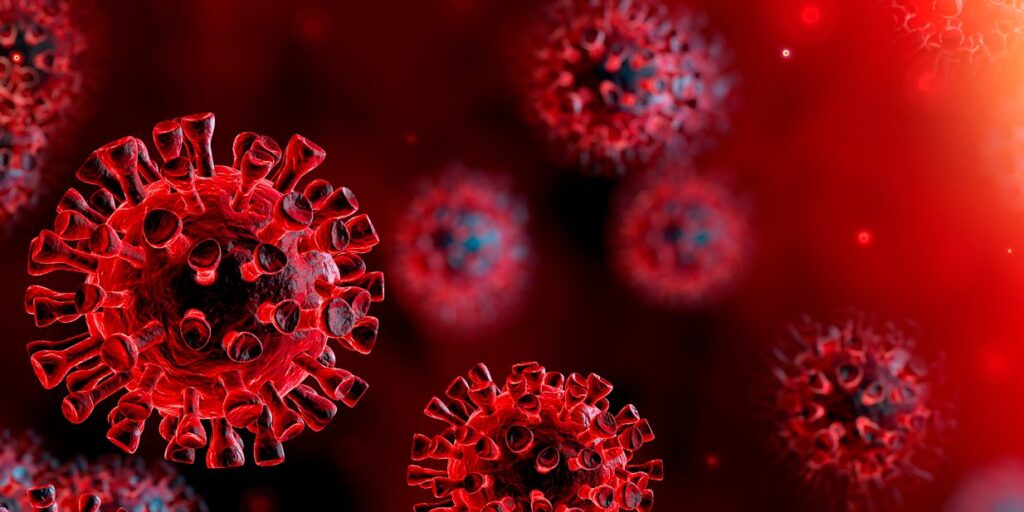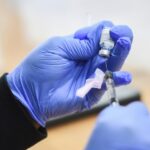The COVID-19 pandemic has altered the global landscape in profound ways, affecting nearly every aspect of daily life. As we continue to navigate this crisis, understanding the origins, symptoms, preventive measures, and ongoing developments is essential to mitigating its impact. In this article, we will delve into these aspects in detail, offering a comprehensive overview of the pandemic and its far-reaching implications.

What is COVID-19?
COVID-19 is caused by the SARS-CoV-2 virus, a novel coronavirus that emerged in late 2019. This virus primarily spreads through respiratory droplets when an infected person coughs, sneezes, or talks. Initially identified in Wuhan, China, the virus rapidly spread across the globe, leading to widespread outbreaks and global health emergencies.
The virus primarily targets the respiratory system but can also affect other organs, leading to a range of complications, particularly in individuals with underlying health conditions.
Key Characteristics of SARS-CoV-2:
- Virus Type: Coronavirus
- Transmission: Primarily through respiratory droplets
- Incubation Period: Typically 2-14 days
- Variants: Multiple variants, including Alpha, Delta, Omicron, and others, have emerged, each with varying levels of transmissibility and severity.
Symptoms of COVID-19
Symptoms of COVID-19 can range from mild to severe and may appear 2-14 days after exposure. Understanding these symptoms is crucial for early detection and preventing further spread.
Common Symptoms:
- Fever or chills
- Cough
- Shortness of breath or difficulty breathing
- Fatigue
- Muscle or body aches
- Loss of taste or smell
- Sore throat
- Congestion or runny nose
- Nausea or vomiting
- Diarrhea
While these are the most commonly reported symptoms, COVID-19 can also lead to severe respiratory distress, hospitalization, and, in some cases, death, particularly among vulnerable populations such as the elderly or those with pre-existing medical conditions.
How COVID-19 Spreads
COVID-19 spreads primarily through close contact with infected individuals. It is important to understand the key modes of transmission to implement effective preventive measures.
Modes of Transmission:
- Person-to-Person: Through respiratory droplets when an infected person coughs, sneezes, or talks.
- Surface Contamination: The virus can survive on surfaces for a limited time, posing a risk of transmission through contact with contaminated surfaces.
- Airborne Transmission: In certain conditions, COVID-19 can spread through aerosols in enclosed spaces, especially when ventilation is poor.
Preventive measures, such as wearing masks, maintaining physical distance, and practicing good hand hygiene, are crucial in reducing the spread of the virus.
Preventing the Spread of COVID-19
While vaccines have proven to be a key tool in controlling the spread of the virus, there are several other preventive measures that individuals and communities must take to minimize transmission.
Key Preventive Measures:
- Vaccination: Getting vaccinated is one of the most effective ways to reduce the risk of severe illness and transmission of COVID-19.
- Hand Hygiene: Regular hand washing with soap and water for at least 20 seconds is critical in eliminating viruses from the hands.
- Masks: Wearing masks in crowded places or when social distancing is not possible helps to prevent respiratory droplets from being transmitted.
- Social Distancing: Maintaining a safe distance of at least 6 feet from others reduces the likelihood of close contact with infected individuals.
- Avoiding Crowded Indoor Spaces: Since the virus spreads more easily in confined, poorly ventilated spaces, avoiding crowded indoor areas can significantly reduce exposure.
The Role of COVID-19 Vaccines
Vaccines have emerged as the cornerstone in the fight against COVID-19, with several highly effective vaccines being developed and distributed worldwide. These vaccines work by stimulating the body’s immune system to recognize and fight the virus, thereby preventing infection or reducing the severity of illness.
Types of COVID-19 Vaccines:
- mRNA Vaccines: Pfizer-BioNTech and Moderna vaccines use messenger RNA technology to instruct cells to produce a protein that triggers an immune response.
- Viral Vector Vaccines: The Johnson & Johnson vaccine uses a harmless virus to deliver the genetic material of SARS-CoV-2, prompting the immune system to produce antibodies.
- Protein Subunit Vaccines: Novavax is an example of a protein subunit vaccine that introduces harmless pieces of the virus to stimulate an immune response.
Vaccination campaigns have been instrumental in controlling outbreaks, but global efforts are still underway to ensure equitable distribution of vaccines, especially in low-income countries.
The Impact of COVID-19 on Global Health Systems
The COVID-19 pandemic has placed an unprecedented strain on health systems around the world. Hospitals and medical facilities have been overwhelmed with the number of cases, leading to resource shortages, staff burnout, and disruptions in non-COVID medical care. The pandemic has highlighted the need for robust healthcare infrastructure and better preparedness for future public health crises.
Key Challenges:
- Overcrowded Hospitals: The surge in COVID-19 cases has led to overcrowded hospitals, making it difficult for healthcare providers to treat all patients effectively.
- Supply Chain Disruptions: Medical supplies, such as ventilators, personal protective equipment (PPE), and testing kits, have been in short supply, hampering the response to the pandemic.
- Mental Health Crisis: The pandemic has taken a toll on the mental health of healthcare workers and the general public, with increased cases of anxiety, depression, and post-traumatic stress disorder (PTSD).
Long-Term Effects of COVID-19
While many individuals recover from COVID-19 within a few weeks, some may experience long-term effects, known as “long COVID.” This condition can cause persistent symptoms, such as fatigue, brain fog, and difficulty breathing, for months after the initial infection.
Common Long COVID Symptoms:
- Extreme fatigue
- Shortness of breath
- Chest pain
- Joint pain
- Cognitive impairments (brain fog)
- Sleep disturbances
- Anxiety and depression
Research into long COVID is ongoing, and understanding these long-term effects is crucial for providing appropriate care to individuals who are affected.
The Economic and Social Impact of COVID-19
The COVID-19 pandemic has caused significant disruptions to the global economy. Lockdowns, travel restrictions, and business closures have resulted in economic downturns, job losses, and widespread financial instability. Furthermore, the pandemic has exposed and exacerbated social inequalities, as vulnerable communities face disproportionate impacts.
Economic Challenges:
- Job Losses: Many industries, especially hospitality and tourism, have been severely impacted by the pandemic, leading to widespread job losses.
- Global Recession: Countries around the world have entered recessions as a result of decreased consumer activity and trade disruptions.
- Income Inequality: The economic fallout of the pandemic has disproportionately affected low-income communities, deepening existing inequalities.
In addition to economic challenges, COVID-19 has also disrupted education systems, as schools shifted to remote learning and many students faced challenges in accessing online education.
The Future of COVID-19: What Lies Ahead?
As the pandemic continues to evolve, scientists and public health officials remain focused on understanding new variants of the virus and developing strategies to address emerging challenges. Continued vaccination efforts, alongside enhanced treatments and preventive measures, are expected to play a key role in bringing the pandemic under control.
Emerging Trends:
- Vaccine Development: Ongoing research into next-generation vaccines, including those that provide broader protection against multiple variants, is crucial.
- Treatment Advancements: New antiviral treatments are being developed to help manage COVID-19 infections, especially in high-risk patients.
- Public Health Infrastructure: Strengthening global public health systems and ensuring equitable access to medical resources are critical for preventing future pandemics.

